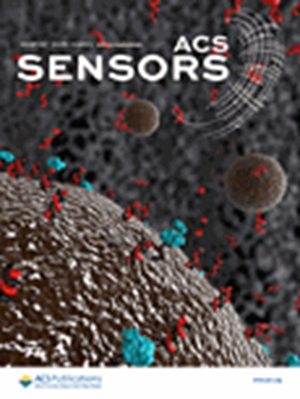On-Chip Integration of Self-Joule-Heated Oxide Nanosensors Discriminates Odor Components via Efficient Data Acquisition.
IF 9.1
1区 化学
Q1 CHEMISTRY, ANALYTICAL
引用次数: 0
Abstract
Current data-based informatics approaches require efficient acquisition and processing of large data. Additionally, the collection and analysis of chemical information, involving combinations of molecules, require highly integrated sensors working in parallel. However, a trade-off exists between the collection of large data for high accuracy and minimizing the energy required to operate large arrays of sensors to detect the broadest range of analytes possible. The difficulty in achieving the high-density integration of heterogeneous sensing materials, which is inevitable in conventional chemical sensor arrays, is a critical bottleneck for efficient chemical data acquisition. Here we demonstrate the on-chip integration of self-Joule-heated oxide nanochannel sensors for discriminating complex odor components. Local temperature control of metal oxide surfaces via self-Joule-heating in nanofilm channels enables the individual modulation of chemical reactivity within each sensor of the integrated homogeneous-material sensor array chip. Herein, micrometer-scale temperature control and the modulation of molecular sensing properties were successfully implemented by optimizing the electrothermal design of SnO2 nanofilm channel sensors. The fabricated sensor arrays can identify and classify complex odors from bananas and essential oils. Regression estimation of the ripeness (sugar-to-acid ratio) of bananas and the classification of four essential oils were demonstrated via simultaneous multitemperature operations of the homogeneous SnO2 nanofilm channel sensor array. Feature analysis of the regression and classification models revealed the significant contribution of the sensor recovery time to the accuracy of data discrimination, highlighting that the desorption process modulation of molecules on the metal oxide surface via Joule heating plays a key role in complex odor discrimination.片上集成自焦耳加热氧化物纳米传感器鉴别气味成分通过有效的数据采集。
当前基于数据的信息学方法需要有效地获取和处理大数据。此外,收集和分析化学信息,包括分子的组合,需要高度集成的传感器并行工作。然而,在收集大数据以获得高精度和最小化操作大型传感器阵列所需的能量以检测尽可能广泛的分析物之间存在权衡。传统化学传感器阵列难以实现异构传感材料的高密度集成,这是实现高效化学数据采集的关键瓶颈。在这里,我们展示了芯片上集成的自焦耳加热氧化物纳米通道传感器,用于识别复杂的气味成分。通过纳米膜通道中的自焦耳加热对金属氧化物表面进行局部温度控制,可以在集成的均质材料传感器阵列芯片的每个传感器内单独调制化学反应性。本文通过优化SnO2纳米膜通道传感器的电热设计,成功地实现了微米尺度的温度控制和分子传感特性的调制。制造的传感器阵列可以识别和分类来自香蕉和精油的复杂气味。通过对均相SnO2纳米膜通道传感器阵列进行多温度同步操作,证明了香蕉成熟度(糖酸比)的回归估计和四种精油的分类。回归和分类模型的特征分析揭示了传感器恢复时间对数据识别精度的重要贡献,强调通过焦耳加热对金属氧化物表面分子的解吸过程调节在复杂气味识别中起着关键作用。
本文章由计算机程序翻译,如有差异,请以英文原文为准。
求助全文
约1分钟内获得全文
求助全文
来源期刊

ACS Sensors
Chemical Engineering-Bioengineering
CiteScore
14.50
自引率
3.40%
发文量
372
期刊介绍:
ACS Sensors is a peer-reviewed research journal that focuses on the dissemination of new and original knowledge in the field of sensor science, particularly those that selectively sense chemical or biological species or processes. The journal covers a broad range of topics, including but not limited to biosensors, chemical sensors, gas sensors, intracellular sensors, single molecule sensors, cell chips, and microfluidic devices. It aims to publish articles that address conceptual advances in sensing technology applicable to various types of analytes or application papers that report on the use of existing sensing concepts in new ways or for new analytes.
 求助内容:
求助内容: 应助结果提醒方式:
应助结果提醒方式:


